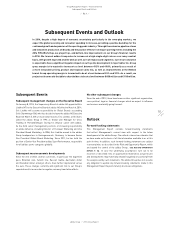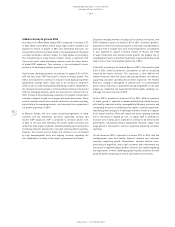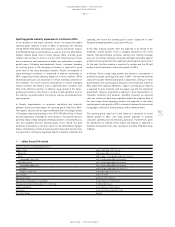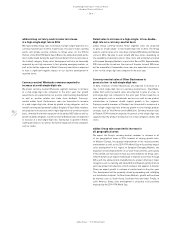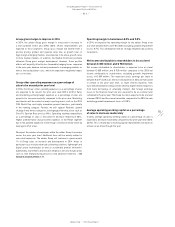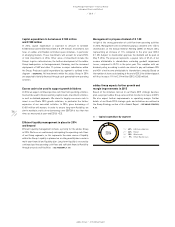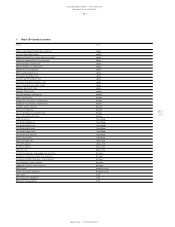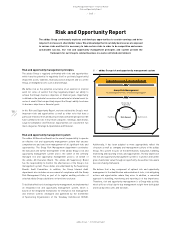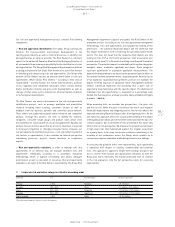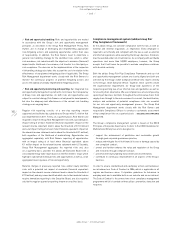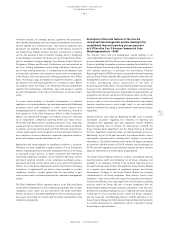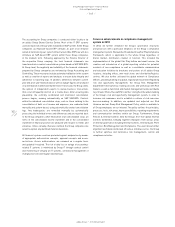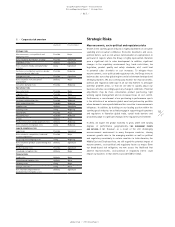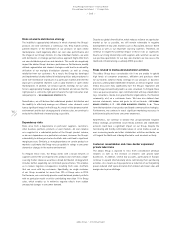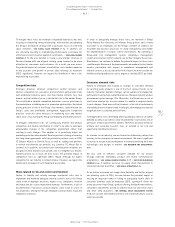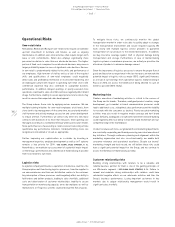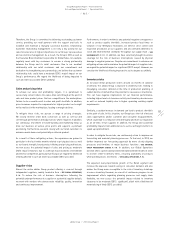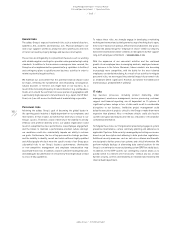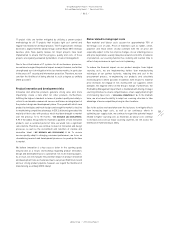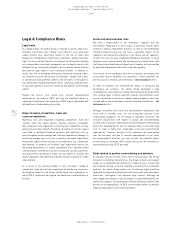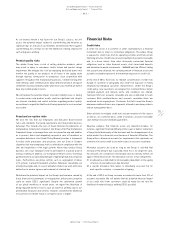Reebok 2013 Annual Report Download - page 165
Download and view the complete annual report
Please find page 165 of the 2013 Reebok annual report below. You can navigate through the pages in the report by either clicking on the pages listed below, or by using the keyword search tool below to find specific information within the annual report.
adidas Group
/
2013 Annual Report
Group Management Report – Financial Review
161
2013
Risk and Opportunity Report
/
03.5
/
Prevention includes, for example, policies, guidelines and procedures,
which provide all employees with clear and precise behaviour instructions
and are updated on a continuous basis. These policies, guidelines and
procedures are available for all employees on the Group’s intranet in
our Global Policy Manual. Another vital part of prevention is training,
such as the web-based Code of Conduct training, which is mandatory
for all employees worldwide. The Group also has a Group Privacy Policy,
which is available in multiple languages (e.g. German, English, Spanish,
Portuguese, Chinese and Russian). Furthermore, we have launched an
anti-trust training programme incorporating web-based training and
face-to-face training workshops. It is mandatory for all employees who
are exposed to customers and competitors and it forms an integral part
of the Group’s skills and operational training programme within Global
Sales. The Group’s Legal & Compliance department monitors, updates
and improves the training programme on a continuous basis. Before
our products enter the market, our Intellectual Property department
examines the technologies, trademarks, logos and designs to identify
possible infringements of the rights of third parties as well as product
safety.
To ensure timely detection of potential infringements of statutory
regulations or internal guidelines, we have implemented whistleblowing
procedures which allow employees to either report concerns over
wrongdoing/potential compliance violations internally (e.g. directly to
their supervisor, to the Chief Compliance Officer or other Compliance
Officers, the relevant HR manager or the Works Council) or externally
via an independent, confidential reporting hotline and email service.
The hotline (Fair Play hotline) is available around the clock, seven days
a week and can be called free of charge in over 60 countries worldwide.
In addition, our Group Internal Audit and Profit Protection departments
conduct regular audits and investigations to detect potential incidents of
non-compliance. In case of reported or suspected compliance violations,
ad hoc investigations may be undertaken as well.
Appropriate and timely response to compliance violations is essential.
Therefore, we have established a global network of local Compliance
Officers reporting directly to the Chief Compliance Officer of the Group
as dedicated contact persons, to whom complaints and information
concerning compliance violations can be reported. We track, monitor
and report potential incidents of non-compliance worldwide using a
web-based reporting solution which can be accessed by all Compliance
Officers across the Group. Appropriate sanction mechanisms (including
termination of employment) are used to react promptly to possible
compliance violations. Insights gained from the investigation of past
violations are used to continuously improve the compliance management
system.
The Chief Compliance Officer regularly reports to the Executive Board
on the further development of the compliance programme and on major
compliance cases, which are also reported to the Audit Committee.
Further, he reports to the Audit Committee at one of its meetings at least
once a year concerning the contents and the further development of the
compliance programme.
Description of the main features of the internal
control and risk management system relating to the
consolidated financial reporting process pursuant
to § 315 section 2 no. 5 German Commercial Code
(Handelsgesetzbuch – HGB)
The internal control and risk management system relating to the
consolidated financial reporting process of the adidas Group represents a
process embedded within the Group-wide corporate governance system.
It aims at providing reasonable assurance regarding the reliability of the
Group’s external financial reporting by ensuring Group-wide compliance
with statutory provisions, in particular the International Financial
Reporting Standards (IFRS) and internal consolidated financial reporting
policies (Group Finance Manual). We regard the internal control and risk
management system as a process based on the principle of segregation
of duties, encompassing various sub-processes in the areas of
Accounting, Controlling, Taxes, Treasury, Planning, Reporting and Legal,
focusing on the identification, assessment, treatment, monitoring and
reporting of financial reporting risks. Clearly defined responsibilities are
assigned to each distinct sub-process in the various areas. In a first step,
the internal control and risk management system serves to identify and
assess as well as to limit and control risks identified in the consolidated
financial reporting process which might result in our consolidated
financial statements not being in conformity with internal and external
regulations.
Internal Controls over Financial Reporting (ICoFR) serve to provide
reasonable assurance regarding the reliability of reporting and
compliance with applicable laws and regulations despite identified
financial reporting risks. To monitor the effectiveness of ICoFR, the
Group Internal Audit department and the Group Policies & Internal
Controls department regularly review accounting-relevant processes.
Additionally, as part of the year-end audit, the external auditor selects
and examines internal controls, including the IT systems, to assess their
effectiveness. The Audit Committee of the adidas AG Supervisory Board
also monitors the effectiveness of ICoFR. However, due to limitations of
ICoFR, even with appropriate and functional systems absolute certainty
about the effectiveness of ICoFR cannot be guaranteed.
The Group Finance Manual comprises uniform consolidated financial
reporting policies which are mandatory for all Group companies and
available to all employees involved in the financial reporting process
through the Group-wide intranet. We update the Group Finance Manual
on a regular basis, dependent on regulatory changes and internal
developments. Changes to the Group Finance Manual are promptly
communicated to all Group companies. Clear policies serve to limit
employees’ scope of discretion with regard to recognition and valuation
of assets and liabilities, thus reducing the risk of inconsistent accounting
practices within the Group. We aim to ensure compliance with the
Group Finance Manual through continuous adherence to the four-eyes
principle in accounting-related processes. In addition, the local manager
responsible for the accounting process within the Group companies
and the respective local Managing Director confirm adherence to the
Group Finance Manual and International Financial Reporting Standards
in a written declaration of completeness, which is provided to Group
Accounting on a quarterly basis.


